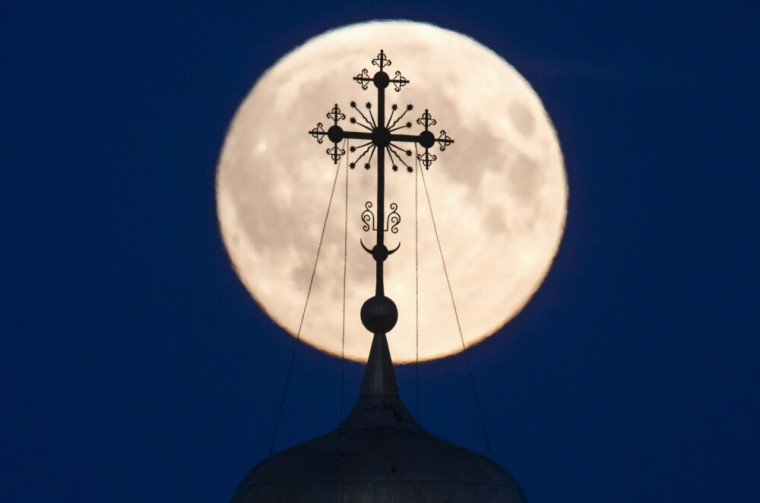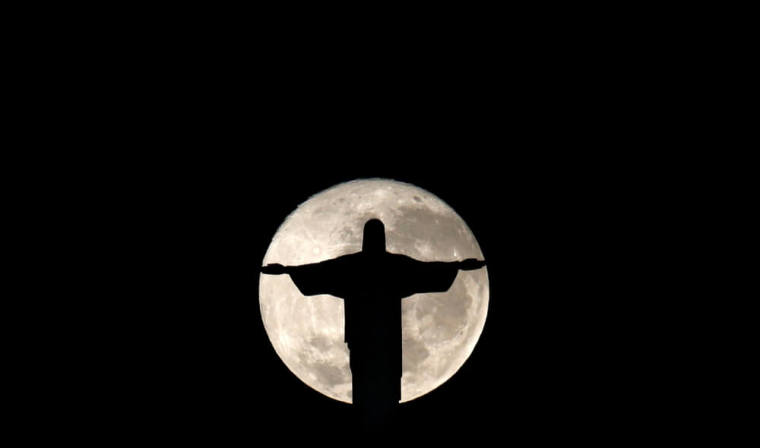Supermoon: 3 Facts About November's Biggest Moon Since 1948
Stargazers will be able to see a massive supermoon on Nov. 13–14 because the moon will be physically closer to the Earth for the first time since 1948.
While the term "supermoon" is neither technical nor astronomical, it refers to the moon's proximity to the Earth. On Monday, Nov. 14, the moon will turn completely full at 8:52 a.m. EST and will be hanging very low to the horizon.
"According to NASA, the best time to see it is early Monday morning before sunrise, as the moon is closest to Earth at 6:22 a.m., EST," Fox News reports.

1. This is the second of three supermoons this year
The last supermoon of the year will be on Dec. 14, but it will not be as close as the one seen on Nov. 13–14. Those who want see a supermoon that will be this close to the Earth will have to wait 18 years, when the next sighting will be on Nov. 25, 2034.
"The moon has an elliptical orbit around the Earth, so sometimes it is closer to our plant than other times. When the moon is closest to the Earth in its orbit, it is at perigee, and when it is farthest away it is at apogee," the Baltimore Sun reports. "The moon at perigee is almost 30,000 miles closer to Earth than at apogee, and so it looks much larger in the sky. When we get a full moon close to perigee, we call it a supermoon."

2. Apogee, Perigee, Syzygy, Perihelian
This phenomenon brings out some fun spelling-bee type words, related to the moon's path around the Earth and Earth's revolution around the sun.
Apogee is when the moon is the farthest distance from the Earth in its orbit.
Because the moon's orbit is elliptical and not circular, there are points at which it is physically farther away from the Earth.
Perigee is the distance between the Earth and the moon at their closest point.
Though its actual size does not change, according to Popular Mechanics, a "perigee full moon is about 14 percent bigger and 30 percent brighter than an apogee full moon, providing plenty of light to see at night if there are clear skies. The moon can look much larger, however, when it is hanging close to the horizon — an illusion caused by distortion from the atmosphere and the ability to use trees or buildings on the ground as a frame of reference for the size of the moon."
Syzygy is configuration in which the Earth, moon and sun all align along the same plane — and the moon is on the opposite side of the Earth from the sun, yielding a full moon. When those three elements line up in a straight line where the Earth's shadow falls on the moon, that yields a lunar eclipse.
Perihelion is the Earth's closest point to the sun for the year.
Supermoons that appear particularly close to the Earth are a result of a full moon, positioned at its perigee, and the Earth at perihelion all converging at once.

3. Because this supermoon is happening in November, it's called a "beaver moon"
According to Farmer's Almanac, both colonists and the Algonquin Native American tribe used to call the full moon during November the Beaver Moon because this was the best time "to set beaver traps before the swamps froze, to ensure a supply of warm winter furs."
Native Americans also called the full moon in November a Full Frost Moon.
The Slooh Community Observatory will offer a live broadcast for the supermoon starting at 8 p.m. EST on Nov. 13.

































